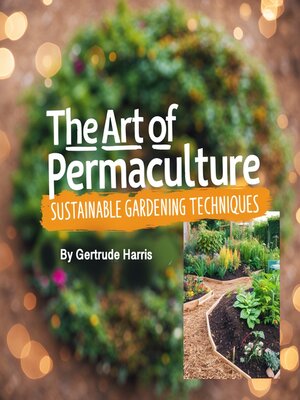The Art of Permaculture
audiobook (Unabridged) ∣ Sustainable Gardening Techniques
By Gertrude Harris

Sign up to save your library
With an OverDrive account, you can save your favorite libraries for at-a-glance information about availability. Find out more about OverDrive accounts.
Find this title in Libby, the library reading app by OverDrive.



Search for a digital library with this title
Title found at these libraries:
| Library Name | Distance |
|---|---|
| Loading... |
Permaculture is more than just a gardening method; it is a holistic design system that seeks to mimic the natural world to create sustainable, resilient, and productive environments. At its core, permaculture is grounded in principles that prioritize ecological balance, efficient use of resources, and long-term sustainability. It offers an alternative approach to conventional agriculture and landscaping by encouraging the creation of self-sustaining ecosystems that require minimal input from external resources.
The term "permaculture" is derived from a combination of "permanent" and "agriculture," though it has since evolved to encompass more than just agricultural practices. Permaculture is a design philosophy that aims to create systems that are not only ecologically sound but also socially and economically sustainable. It is a system of ethics and principles that can be applied to all areas of life, from food production and energy systems to community building and even urban planning.
One of the key tenets of permaculture is the concept of working with nature rather than against it. This means observing the natural systems around us—how water flows, how plants interact with each other, and how animals move within their environment—and designing systems that work in harmony with these natural patterns. By doing so, permaculture seeks to reduce waste, lower energy consumption, and minimize human impact on the planet.







